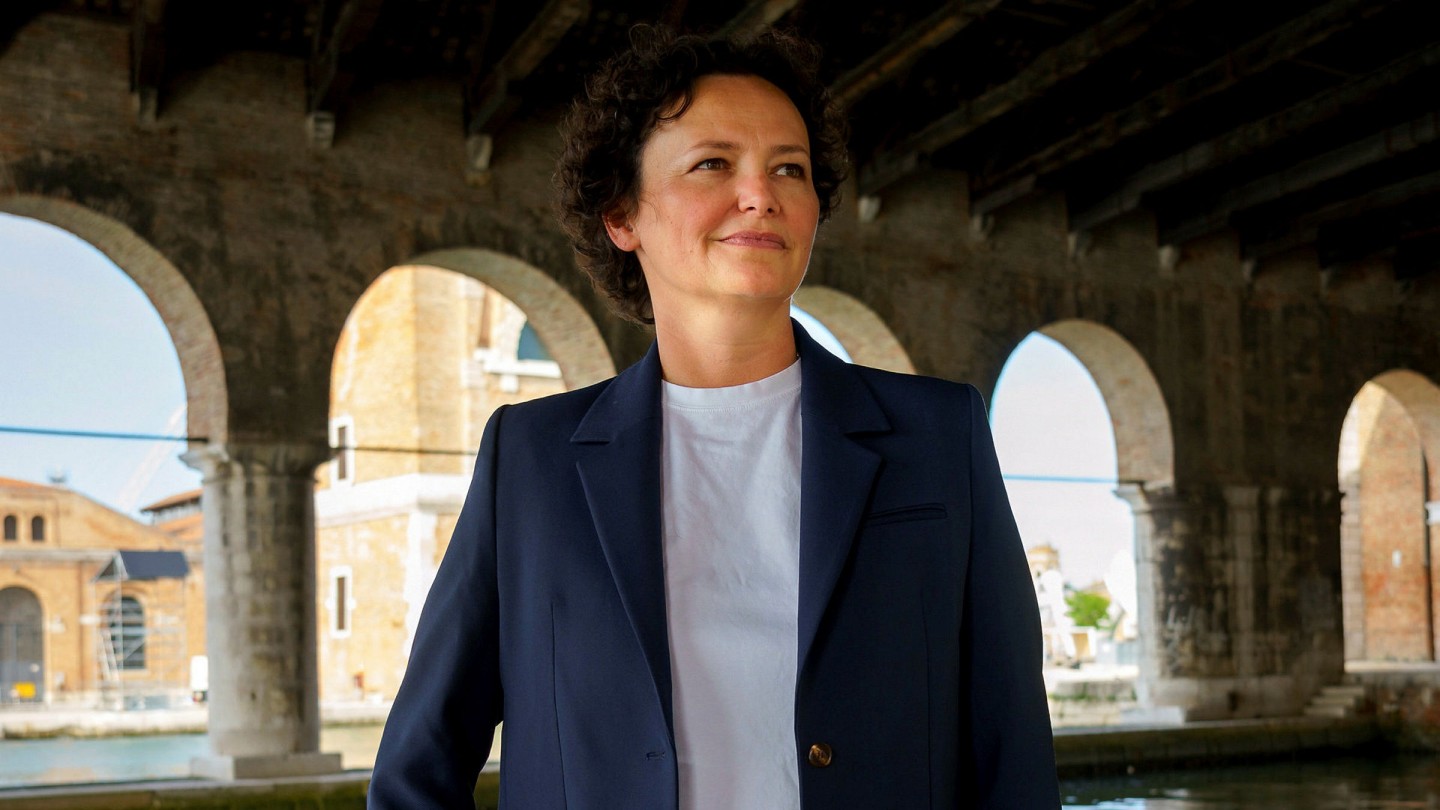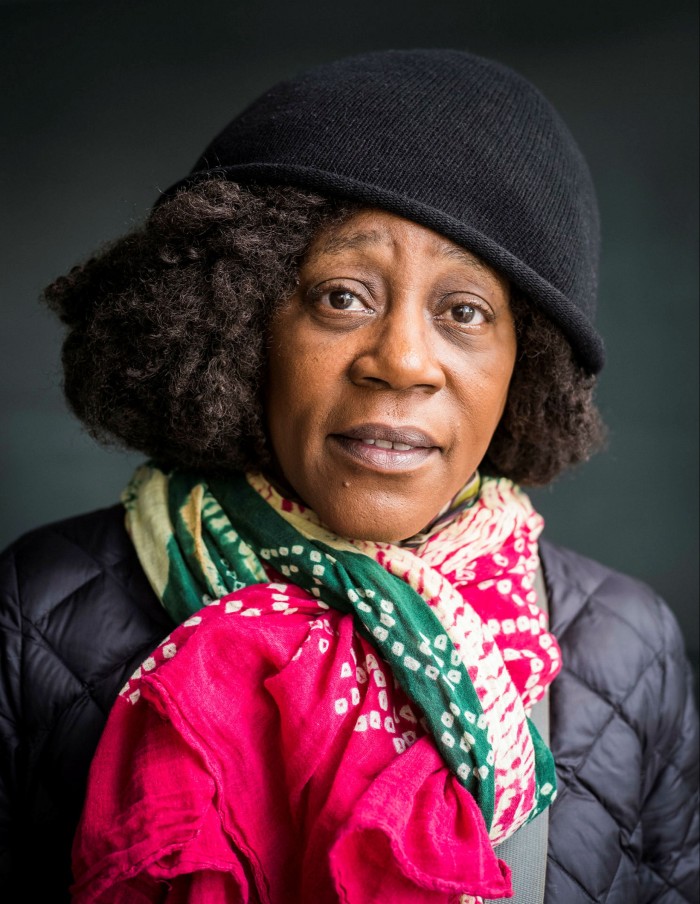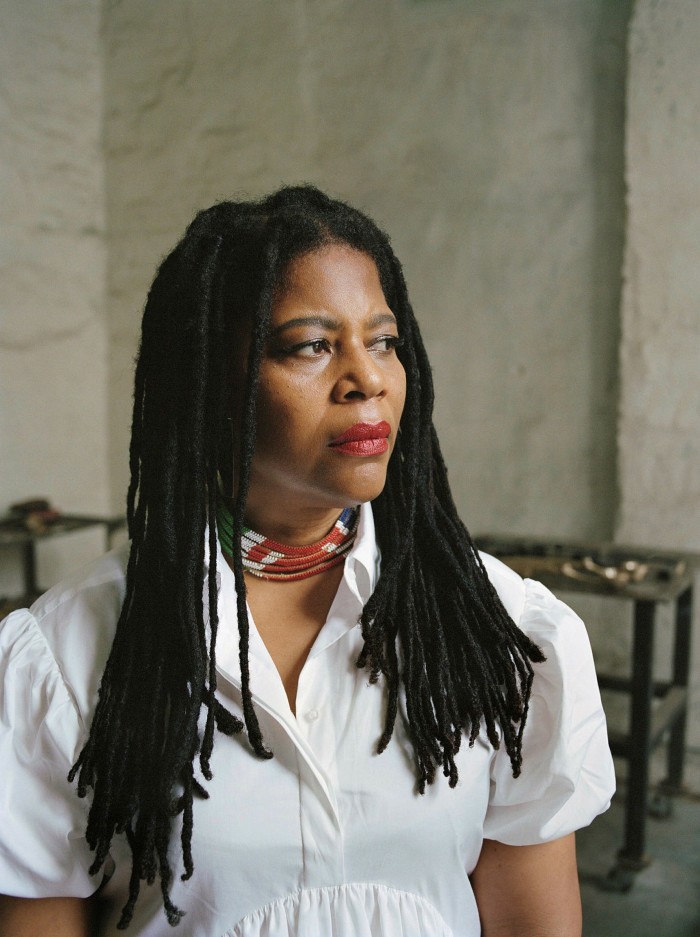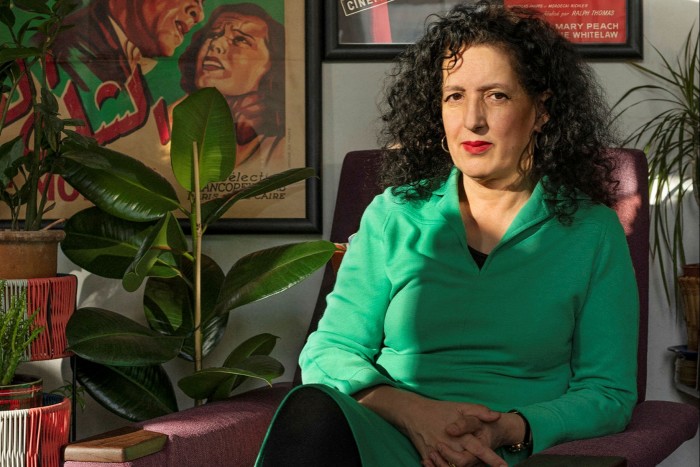Venice Biennale’s Cecilia Alemani on her female-led show and turning nationalism upside down

Roula Khalaf, Editor of the FT, selects her favourite stories in this weekly newsletter.
It was, she says, “a bumpy start”. Surrounded by packing crates, Cecilia Alemani, curator of the 59th Venice Biennale, is speaking from the vast echoing spaces of the Arsenale, where her exhibition The Milk of Dreams is being installed. “What was very challenging was the total lack of certainty,” she adds, as she describes being appointed early in 2020 (ostensibly for a 2021 show), only to see the well-oiled art-world machine judder to a halt as the pandemic hit.
She did, though, appreciate one aspect: “I had extra time, which allowed me to learn more, and study — things that are very important in exhibition-making. I was already thinking of a show about metamorphosis, and the time factor allowed me to expand on this theme, thinking about how our bodies change, historically and in relation to our surroundings. And gradually the show became articulated.”
The Milk of Dreams is a title taken from a book by the surrealist artist Leonora Carrington which evokes “a magical world where life is constantly re-envisioned through the prism of the imagination”, Alemani says in a statement. “Everyone can change, be transformed, become something or someone else.”
Beyond the metamorphosis of bodies, her thematic reach includes the relationship between individuals and technologies, and the connection between our bodies and the Earth. No small ambition, but suitably capacious for an exhibition as enormous and varied as the Biennale’s official offering: hundreds of artists from across the world, in spaces that stretch across the main Giardini pavilion and the immense Arsenale, lasting seven months and with a projected audience of 700,000.

How curators rise to the challenge of this monster show is always closely scrutinised, and it’s a task that has defeated some. But Alemani — with just a week to go — was looking cheerful and confident. Talking over a crackling Zoom link, we didn’t dwell long on the nightmarish logistical challenges that have arisen, first, because of pandemic restrictions, and then because of the Ukrainian war, shipping disruptions, fuel prices and the rest.
Instead, we talk about a feature of her exhibition that is already gathering publicity: for the first time Alemani has created a heavily female-dominated event: of the 213 artists from 58 countries she has included, only 21 are male. Yet this fact is worn lightly, and doesn’t appear prominently in any of her statements. It’s a revolution quietly done — on purpose?
“As a curator I’ve always worked with lots of women,” she says. “I didn’t start the process by thinking ‘I want to do a show with a lot of women’ — I hate the idea of quotas and numbers — I just invited the artists I admired and it evolved like that.”

Of the decision not to apply any labels, she says: “I didn’t want to speak for the artists, or to make a particular claim — they are in the show because they are excellent artists and because I wanted to work with them. It’s a plurality of voices: although some are very proud to push the feminist agenda, others would be very tired with that label. They can speak for themselves.”
Alemani applied a more focused approach, however, in another of her innovations for this year’s exhibition. She has created five “time capsules” — side shows of historic art, filled with women artists. “Yes, this was more intentional. I wanted to focus on chapters of art history that are well documented — surrealism, Dada, Bauhaus and so on — but are very much male-centred and male-dominated. There are amazing women artists as well who were working and operating at the same time, and I wanted to focus on what had been ignored or obliterated.”
Some of the themes, she says, arose from pandemic thinking: bodies changing through a clash with machines and technology, a broader relationship with other forms of life, all “became extremely real in front of our eyes”. And there was, of course, a second completely unforeseen factor: the “heartbreaking crisis” of the war in Ukraine. Since world politics inevitably intruded — the Russian pavilion was abruptly cancelled when its artists and curators resigned — does it, I wonder, throw the old-fashioned quasi-nationalistic basis of the Biennale into question?

Alemani has a firm defence. “In times like this,” she says, “an institution like the Biennale can be a place where channels of communication, exchanges of culture, can continue to happen in spite of the war.” There are Russian artists in the historical parts of the show, and an individual contemporary Russian artist continues to be welcome — “Honestly, I don’t see why I should punish her just for being [Russian]. These are times when we need to use culture to continue the conversation, not just close the door.” Meanwhile, the Biennale has gone to great lengths to help the Ukrainian pavilion go ahead with its planned display.
Yet the fact of a vicious war taking place not far away might throw the traditional structure, founded on the 19th- and 20th-century ideal of the nation-state, into greater relief. “When you walk through the Giardini, you walk through the political reality of the time — which people like to hate, though I actually think it is what makes the institution unique,” she says. “The real question is how you use a pavilion, especially the older countries. So yes, it’s based on an old, sometimes obsolete model — but as a curator it’s so exciting. You can transform or use the nationalism of that pavilion and turn it upside down.”
For example, this year several major pavilions — the US, France, the UK among them — are featuring female artists of colour, all for the first time. “In over 110 years of the British pavilion, Sonia Boyce is the first woman of colour to show there. We should cultivate the critical conversation that comes out of that — celebrating her, of course, but also the wider issues.
“You breathe all that history when you walk in those spaces: to me it’s a very enriching experience. Of course you have to have a critical approach, to understand what you’re looking at.” With this critical eye, she believes, the pavilions transcend the national self-promotion that was their genesis into a place of self-awareness, self-criticism.
Alemani has also made a further innovation: the Biennale college. It’s an initiative that exists in the other disciplines of the Biennale (dance, music, film), to foster the talent of emerging practitioners. “But there has never been one for art, I don’t know why,” she says. So this year she launched an international call for artists under 30 to submit proposals for a piece or installation around The Milk of Dreams’ themes; after a workshopping process, the final four were chosen for display in the main exhibition. “This is something I’m very proud of — I didn’t want them to be in a separate space, I wanted them to be part of the show exactly like the other artists,” she says.
These new talents will be one of the surprises for next week’s visitors. Another might be the show’s relationship to the ever-present subject of climate crisis — especially since much of it was conceived, Alemani says, when Venice was under 120cm of water. But again her dislike of too much labelling comes in to play and, as with feminism, it seems to be understood that ecological consciousness is now baked into our thinking.
“I think the pandemic has had an effect on this thinking. While early on I saw a lot of artworks that were very much socially engaged, what the pandemic has done is to internalise many concerns. Artists have been isolated, and lots of issues have been expressed in a more personal way: more intimate, more poetic, less documentary. Even political issues are less declamatory, have been internalised more. This is something I’ve noticed . . . Most of the artists have been talking about these issues on a more personal level.”
The pandemic, she says, also had an impact on her own work. “I realised my show is very, very material and concrete, there’s nothing too virtual or digital — I think it’s a result of having created the exhibition through my computer screen, when I missed painting, I missed sculpture. It wasn’t conscious but I have emphasised the real. There is some digital work of course, but no NFTs, no VR.
“I want it to be a way of celebrating coming back together, being in front of art, which is what we love the most.”
April 23-November 27, labiennale.org

Comments